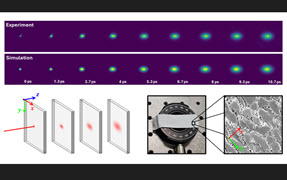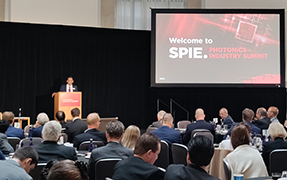Nature, smart structures, and the development of morphing, uncrewed air vehicles

Detailed observation and testing of gliding avian species have resulted in new ways to design morphing, or shape-changing, uncrewed air vehicles (UAVs). These morphing motions could lead to better performance, while further understanding of avian flight stability could lead to new approaches to designing morphing aircraft.
Using smart materials to replicate avian abilities is one way to create these motions. Inspired by gliding gulls who respond immediately and autonomously to changes in flow to maintain stability and control in unpredictable environments, Daniel J. Inman and his team at the Adaptive Intelligent Multifunctional Structures (AIMS) Lab strive to translate this knowledge to flight control of UAVs. In the lab, modifications of reinforcement learning techniques are used to teach smart morphing wings to respond to gusts.
Inman, the Harm Buning Collegiate Professor and former Chair of the Department of Aerospace Engineering at the University of Michigan, will be discussing these ideas in a plenary talk at SPIE Smart Structures + Nondestructive Evaluation (SS/NDE). Inman’s talk will cover methods for designing smart autonomous morphing air foils for use in small UAVs, as well as new learning algorithms for these smart structures.
What are some of the projects at the AIMS lab that you’re most excited about?
The most exciting work currently is the confluence of reinforcement learning, neuromorphic computing, avian biology, smart materials, and morphing UAVs.
What led to your interest in applying smart structures to aerospace engineering?
It started in the 1980s when Crawley and Wada coined the phrase “smart materials.” Dr. Gary Anderson, program manager for the Army Research Office, called and asked if I would speak at a workshop on control issues in smart materials. I accepted, having no idea what smart materials were. The Crawley and Wada paper got me going so I bought some PZT (lead zirconium titanate) and put it on an aluminum beam to see if the beam would vibrate, and off we went. Aerospace vibration problems were a natural fit, then energy harvesting for wireless sensing, then morphing – or shape-changing – wings.
How has the study of nature, such as gliding avian species, affected the development of UAVs?
The Wright Brothers were inspired by nature while building their first airplane, which was controlled by wing twist rather than flaps, as were many of the first attempts at flying. The technology of the 1900s favored discrete control systems vs. the distributed twist used by the Wrights. Today, smart materials have distinct advantages over servo motors and hydraulics. Investigating the incredible ability of avian flyers will inspire new improvements in UAV designs leading to higher performance, new abilities, and more efficiency.
What do you see as the future for creating morphing UAVs or “autonomous multifunctional structures?”
The future is in embedding computing and in focusing on larger shape changes through articulated wing, tail, and body motions.
What are you most proud of in terms of your involvement with SS/NDE conference— including the “SPIE Tribute Conference?”
I was really touched by this tribute. SPIE Smart Structures + NDE has been a home for my students’ research since the beginning of the conference series in 1995.
What would you like attendees to take away from your presentation?
Smart materials have evolved into multifunctional materials, and our community has made great strides. But we’re missing one aspect, and that is embedding computing into structures and structural computing.
| Enjoy this article? Get similar news in your inbox |
|



